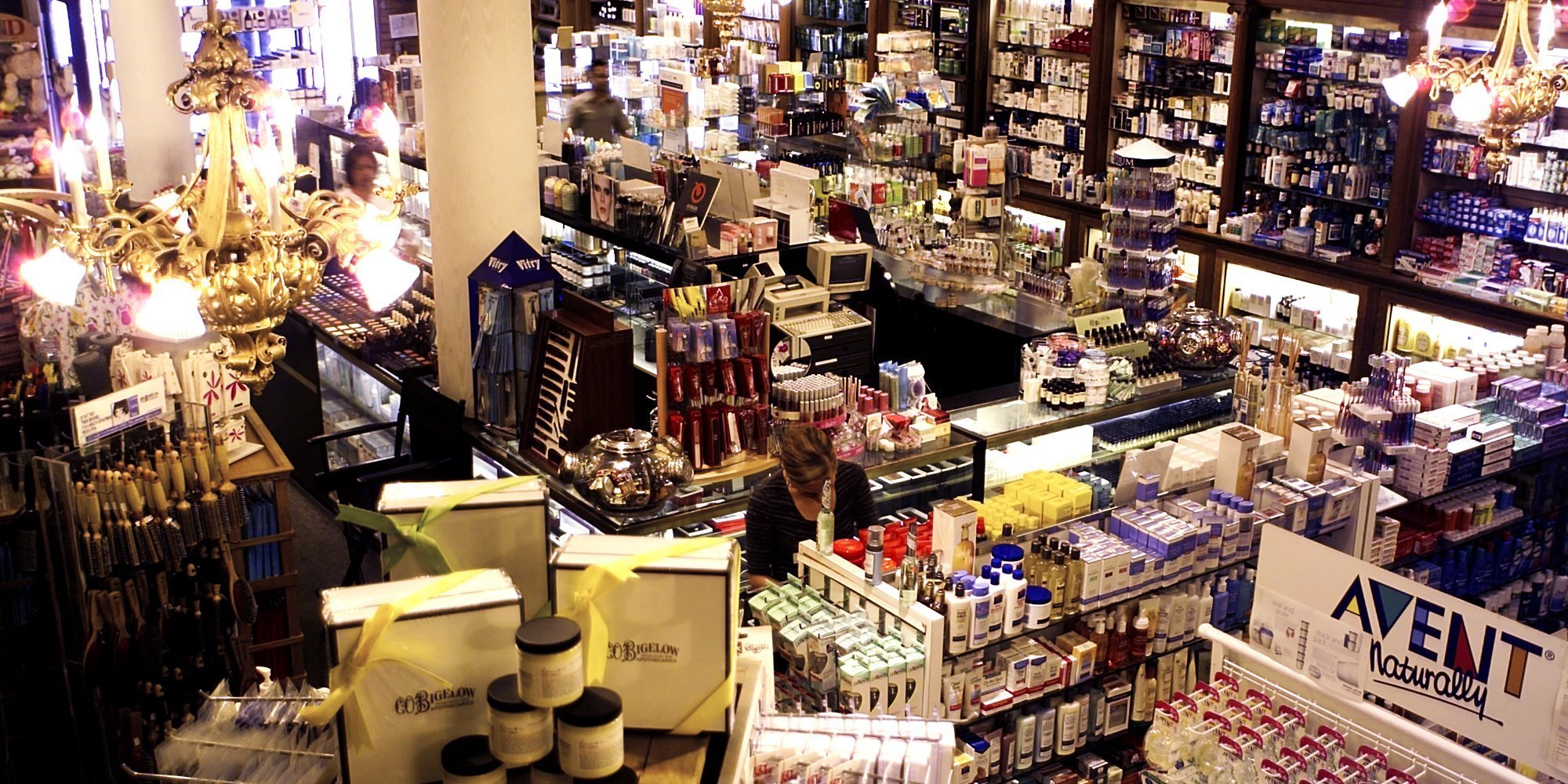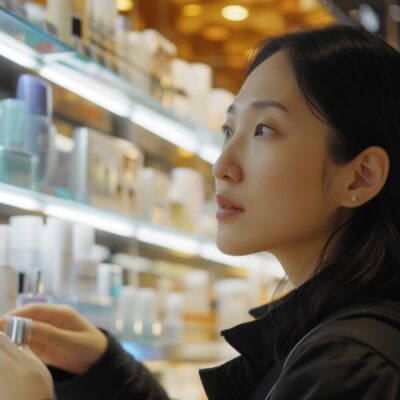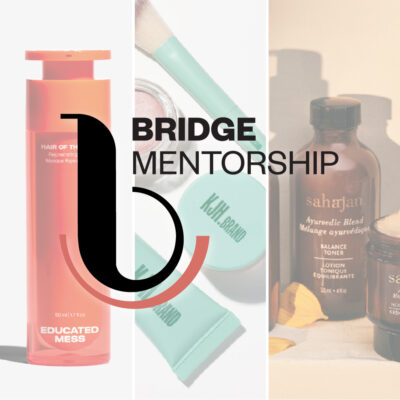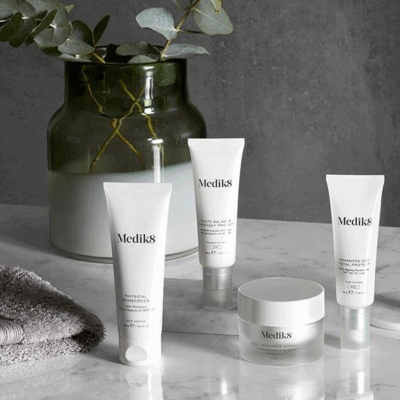
Retailers Reveal What Makes Or Breaks An Indie Beauty Brand In Stores And On Sites
In this edition of Beauty Independent’s ongoing series posing questions to beauty entrepreneurs, we ask 22 retailers: What do your bestselling brands do right, and what are common mistakes you see brands make?
- Kimberly Smith Founder, Marjani
Primarily, the effectiveness of the product. The quality of the product and its ingredients go far with our customers. As the premier curator in the brown beauty space, we seek out high-performing brands that address our beauty needs and wants, which eliminates the frustration we often experience.
Packaging, packaging, packaging. I find the most common mistake brands make is not making sure the outside of the product matches the goodness on the inside. First impressions really do matter. I will not put a product on the shelf (or on our website) with an aesthetic that lacks thought or detail.
- Laura Linsenmayer Owner and Founder, ROOTS the Beauty Underground
Honestly, our bestselling brands are the ones that my team and I are personally passionate about. It is key in the sales results that brands offer samples and gratis to my team as they are now going to have a personal relationship and review of each product. The more in-store and staff support that the brands provide, the better they do overall, always.
A common mistake when considering a brand is in their sales and communication process. Because I take my time to thoughtfully curate the products, I will encounter brands that are too aggressively eager. As a salesperson myself with over 20 years of experience, I am very sensitive to the sales techniques of others. I would never push or force a sale on a client, and I appreciate that same respect back from a brand. It is very important that relationships and growth feels comfortable and natural.
- Romain Gaillard Founder, The Detox Market
Our best brands all have a strong sense of what they have to offer, where they came from, and where they are going. They do not compromise on formulations. It is true that some would rather discontinue a top-selling product than use a cheaper or less effective ingredient when faced with ingredients shortages or changes.
Josh Rosebrook has been working on a couple of his new launches for over a year. If an ingredient isn’t right, he passes and waits for the perfect fit. We know the wait will be worth it. Odacite has 45 products and Valerie Grandury, founder of Odacite, can tell you where every single ingredient in every single product is sourced. Again, what goes into the bottle is just as important, sometimes more important, that what is left out.
One of the most common mistakes we see with new brands is that they rush to get into stores. If they would do a little more research on the marketplace and take a little more time on product testing and presentation in the beginning, many would find the partnership that is best for them. You only get one chance at a first impression.
- MICHELLE CONNELLY Director of Merchandising and Planning, Credo
Our best-performing brands are the ones that understand that the work is just beginning when they get their first PO. Effective products and beautiful packaging are consistent across all of our brands. Where we see a big difference in performance is the effort a brand puts in to their success at retail: sampling, events, in-store support, PR, etc.
The most common mistake is thinking that making beautiful products is all it takes to be successful at retail. It’s so important to have a strong business plan in place to drive brand growth.
- Ian Ginsberg President, C.O. Bigelow
These days, beauty is an easy entry industry, but it’s crowded on the Google highway and if you’re going to stay on top and survive your brand really needs to understand your customer and strive to build a strong emotional connection. You can’t be everything to everyone. There are not enough faces in the world for all the skincare products out there. This is not a case of “if you build it they will come”.
A lot of young brands just want to go the direct-to-consumer route and eliminate the middleman. Many are learning quickly that it’s not a perfect strategy for longterm success. While they want to disrupt the consumer supply chain they wakeup and find out they don’t have the margins for retail. This is not the best way to go. Make sure you have the infrastructure to support retail (i.e. margin, tools, training, samples and testers) because eventually it needs to be part of your distribution strategy.
Consumer preferences have changed. This new generation is not brand loyal, but they are "word-of-mouth" loyal and will often take recommendations from friends and family over traditional advertising. Gone are the old marketing strategies, so study the evolution of beauty, price points, and what makes your customer want, not necessarily need, a product. Our best performing brands intrinsically understand this combination of things.
- JENNIFER FREITAS Founder and CEO, The Truth Beauty Company
Two things equally I would say contribute to a brands success: packaging and performance. A great aesthetic will get a product to be picked up off the shelf initially. A great performing brand will be repurchased. Makers' stories do play a role in building brand awareness, but I do not feel that they are a strong enough driving factor to motivate clients to purchase.
A common mistake I see brands make navigating how to acquire shelf space is that there is not enough attention paid to being unique. Does the packaging and branding stand out enough and, beyond that, is the ingredient deck innovative? The clean beauty industry has been around for a while now. So, any new brands wishing to come to market really should evaluate how they would compare to the brands that have come before them.
- JULIANNE ROBICHEAU Founder, Eco + Amour
The brands we carry in refill perform well because people love having the option of buying exactly how much they need. If they want a sample size, they'll just fill up a tiny pot they brought from home. Once they've had a chance to try a few products, they'll come back to refill on the ones that work for them. It really comes down to the effectiveness of a product. And, of course, since our customers are eco-conscious, they prefer the refill section of the shop, so those brands are naturally doing well.
As for mistakes that are being made: It's not so much a mistake, but something that we have to keep an eye on is greenwashing. We've received pitches from brands who claim to be green, but their ingredient list speaks otherwise. The natural sector can be hard to follow. Every natural beauty store has a different list of ingredients they don't allow.
- Jeannie Jarnot Founder, Beauty Heroes
In this space, you can’t really afford not to have thoughtful branding and packaging, high-quality ingredients and an authentic brand story. But I will say that there is nothing more important than formula and efficacy. If customers are having a good result with a product, then they will come back for it.
I spend a lot of time telling brands that I would love to see what’s outside the bottle match what is inside. That is the better problem to have because, if you have a good product, that delivers on its promise, you are ahead of about 80% of the products that are out there that don’t.
The most common issue with brands that approach us is that they think their product would be unique within our assortment, when it isn’t different enough. We have to be careful of redundancy because we want our brands to really stand out as being leaders in the industry and showcase their hero products.
- Sal Martorano Co-Founder, The Gathering Shops
Everyone appreciates aesthetics and thoughtful packaging, but the stories are what sell emerging brands. Our customers love “meet the founder” opportunities, so brands that actively participate in the merchandising process of our platform really resonate. Return customers understand they’re helping these small business individuals that connected with them and feel a sense of social responsibility to support their endeavors for the greater good.
Due to consumer demand, we’re getting ready to devote an entire section to beauty and wellness, particularly in the CBD category. Holistic and organic products sell exceptionally well, but pet CBD is big. For example, of the CBD items sold in a recent two-week period, 60% were for pets. Considering that our animal companions are a form of self-care, it isn’t too surprising that they are the next beneficiaries of the health and wellness market. That being said, consumers still want to be educated and understand the benefits and uses of these products.
Which brings me to a common mistake brands make, which is failing to provide the supporting materials necessary to explain not only their products, but the end goal of the brand. Content is king. Aside from great products, consumers really care about the individuals behind them. Whether it be signage or content, brands that only send products without these crucially important assets make it difficult to sell.
Our biggest hurdle is enticing people that walk by our windows. We do everything within our means to attract an audience. It’s up to the brands to treat our store like a stage and put on a captivating performance once we get them inside. The point of difference between us versus a large department store is selling the story with the products. We’re not just looking for brands, we’re looking for active creators that want to spend time with their brand and work with us to develop a retail marketing strategy because, in the end, we both do well when a brand succeeds.
- AMY JARGO Global Category Manager for Beauty, Whole Foods Market
The best brands share our core values, offering the highest quality of natural and organic products, and caring about the community and environment. They provide meaningful innovation and successfully connect with consumers to tell their stories.
Our shoppers are always looking for the newest wellness trends to hit the market, so we are very proactive in seeking out products that are toward the beginning of the trend curve. Brands that know this and tailor their assortment strategies to our shopper’s needs succeed on our shelves.
Cocokind is a brand quickly growing at Whole Foods Market because it delivers on these key areas. The brand launched in a few stores initially and rapidly expanded to a national offering. It provides clean, industry-leading innovation like adaptogen-based skincare, empowers female entrepreneurs through the Cocokind Impact Foundation, and engages its fans through brand and product education.
- Nathan Gareau Communications Manager, Kent of Inglewood
We source brands that are made with serious intention and care, made with the goal of being the best. When each step of the process is taken seriously and treated as vital, the packaging, the branding, the performance all fall into place.
The biggest mistake that we see is brands not differentiating themselves from others in a tangible way. It's easy enough to be natural or locally-made, but brands miss out on other characteristics that set them above the competition. Our best brands are meticulously formulated to serve a specific purpose, and do it better than others. Poor branding can also seriously impact a good product.
- Katie Hunt Chief Revenue Officer and Co-Founder, Showfields
Our best brands lead from a place of storytelling. We're not about lining up product on a shelf, but actually capturing the attention of the consumer and providing a touch point with the brands that they are discovering. Each brand space is its own little world, almost as if you are walking into an Instagram ad in real life, and the brands that work the best are the ones that understand that journey.
The most common mistake that an emerging brand can make in retail is trying to accomplish too much in their time with the consumer. By adding too many products and copy in their retail space, the brand can actually confuse and overwhelm the customer instead of giving them an incredible first experience. If a brand can tell the story of one to three hero products, the consumer is more likely to convert and actually feel knowledgeable about the brand and product they purchased.
The goal is to get someone to walk out with a new product, an understanding of why that product is so amazing, and a desire to purchase more products from that brand in the future. We believe the best purchase is one that comes with true excitement and a loyal customer for life.
The future of retail is about getting back to the root of what makes retail interesting, which is that moment of serendipity and discovery. For the consumer, it is not picking up a product from a shelf, but actually creating a memory and experience associated with the product they are purchasing.
- Lauren Fennema Founder, Confidants
Product quality and delivering on the brand promise is a must, but performance is also about brand values and price point. Fans are looking for high-quality products with clear value made by companies they can get behind. That clear value is most often a mix of ingredients, how the product is made and price point.
Great packaging is always a perk. Our fans appreciate style and design. They're more likely to tell their friends about you if it's packaged well, but only if the product is legit.
Common mistakes I see are when brands don't know how they're differentiated or aren't clear on their brand story. As a result, they're focused on the wrong things and easily waffle on their story to chase a recent trend.
- Sarah White Creative Director, The Girl Floral
I would say that packaging is definitely an important factor whether or not items will perform. Customers are definitely drawn to pretty, colourful packaging. Brands that have clear and concise product labels perform well also. For example, our bestselling candles clearly label the different scents on the front. Having a brand story is also something customers like to hear about and allows us to share the values they can relate to.
A common mistake I see brands making is not explaining their product or brand well enough on their packaging. Including a story as well as directions for use allows the consumer to learn a little bit more about the brand and draws them in.
- Madeline Alcott Co-Founder and Co-CEO, Petit Vour
Our top-performing brands tend to offer a range of quality products that provide real, undeniable solutions. They are highly functional and can be easily incorporated into a modern woman or man's routine. Branding is clean, cohesive and professional.
Brands often put a lot of emphasis on their brand story and aesthetic, but the formulations are 90% of what will make or break a brand on the shelf. The other 10%, aesthetic, is still very important and brands need to feel confident that their brand could stand amongst the shop's selection before approaching the buyer.
- Tara Foley Founder, Follain
The experience and the why, what makes this product unique? The experience is key: elements like packaging, scent and texture play a critical role in our testing process and success of top sellers. The quality, performance and ingredient story help us find the best match for our customers based on their skin type, concerns and product preferences.
We take education seriously—our store teams are called Educators!—and our best-performing brands understand how important training is to be successful.
A common mistake we've seen is when a brand puts too much weight on one element like packaging. For a brand to succeed at Follain, it really needs to check all the boxes: safety, unique nourishing ingredients, product performance, packaging (packaging branding, design, components that make sense for the formula, sustainability) and more.
- Niki Richards Founder, Organa Beauty & Wellbeing
Our best-performing brands have at least one unique product attribute. That could be an ingredient or an authentic brand story. Customer reviews are also key in that brand performing well. The most common mistake a brand can make is trying to be something it’s not, or mimicking what they see as a successful brand. The brand ultimately has to have a clear personality and narrative.
- Mandy Butera Owner, Wren and Wild
We look for good stories in our brands. We want to be able to share those brand origins with our clients as it helps them to feel as if they are inviting a trustworthy product into their lives. Packaging is really important as we are looking more for minimal packaging, recyclable, less plastic, renewable resources.
In addition, we are looking for products that are effective. There are so many clean beauty brands with basic oil serums that are just like everyone else. We don't need a dozen serums that all do the same thing. We are looking for cutting-edge clean beauty brands that create beautiful skin with minimal impact on our environment. And, of course, cruelty-free.
- David Olsen CEO, Cos Bar
The biggest mistake is getting it on the shelf and expecting it to sell. They need to do frequent trainings, sampling, and just be as involved with the retailer without being too overbearing to ensure success.
- Aisha Shannon-Bates Founder, Coil Beauty
Not enough brands pay attention or take the time required to fully develop their brand definition and story. This usually results in losing potential customers and not connecting with their audience. As a retailer, we are very invested in strong brands because that also helps support our vision.
- Jennie Fresa Founder and Owner, Copal Clean Beauty
Our best-performing brands have a story behind them. Indie Lee, for example, is a top-selling brand in our store because, not only are her products simple yet effective, but also our guests connect with her story. Indie has made two guest appearances in our boutique, and our clients love to see her and talk to her directly. Personal connection with your consumers is key. This was such a success, I’m planning to host even more “meet the maker” events at our shop in 2020.
- Ayana Blue Senior Discovery Manager, The Grommet
Our best-performing brands in this category reflect beauty tools with approachable innovation, sharp pricing and retail packaging. Spotlight HD is a prime example of this. The consumer connects with the problem, poor lighting, while trying to apply makeup, and sees the solution very clearly presented in our content.
We’re also successful with topical products that reflect a feature or benefit that reflects a new story. There is a movement for consumers to choose more natural deodorants as there have been studies linking the aluminum used in traditional deodorants to overall health concerns. Highlighting an all-natural alternative for the consumer that we have vetted is timely and certainly resonates with our customer.
We review a lot of great products, and there are a few brands or product misses that hold us back, including dated branding and packaging. Makers should consider how their product can stand out among the rest. Makers should be sure to highlight the most important attribute on the packaging. If the product features a unique ingredient, providing certifications or third-party testing results or stamp to show that the product has been tested for efficacy and validated.
I also recommend that, if a brand sees their product in a specific retailer, they should also consider what other brands are in that space and how they will stand out.
If you have a question you’d like Beauty Independent to ask beauty entrepreneurs, please send it to editor@beautyindependent.com.






Leave a Reply
You must be logged in to post a comment.